















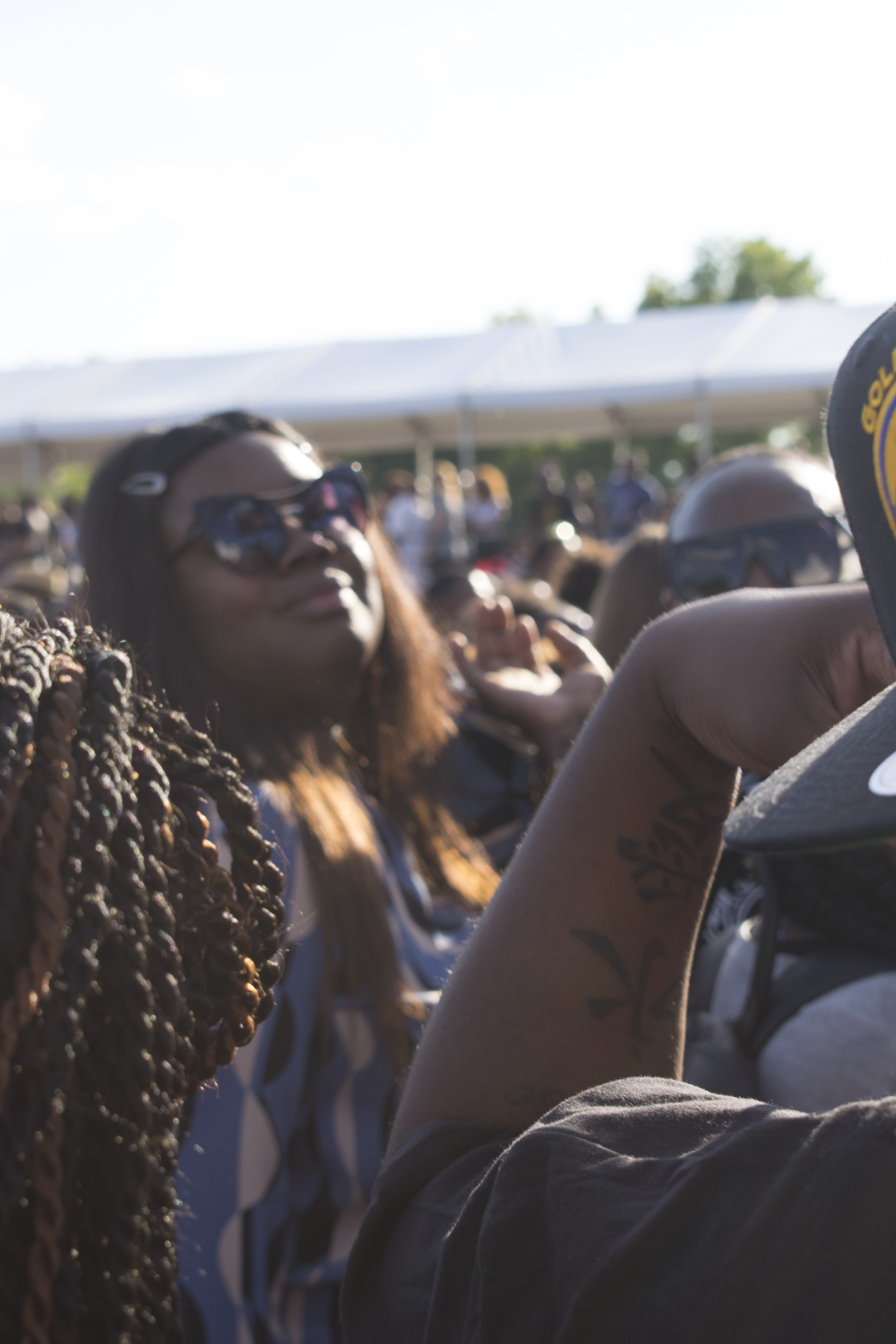





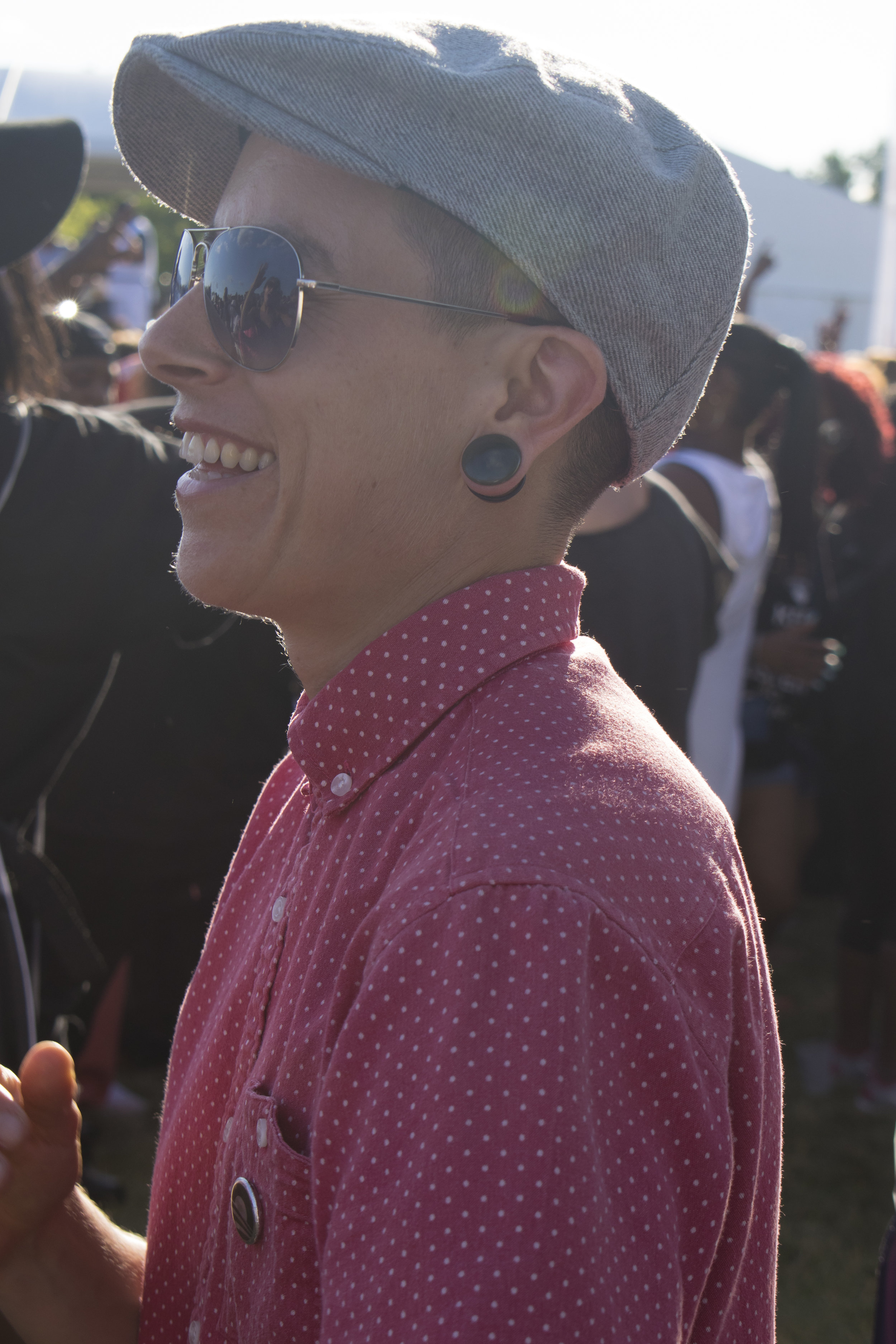



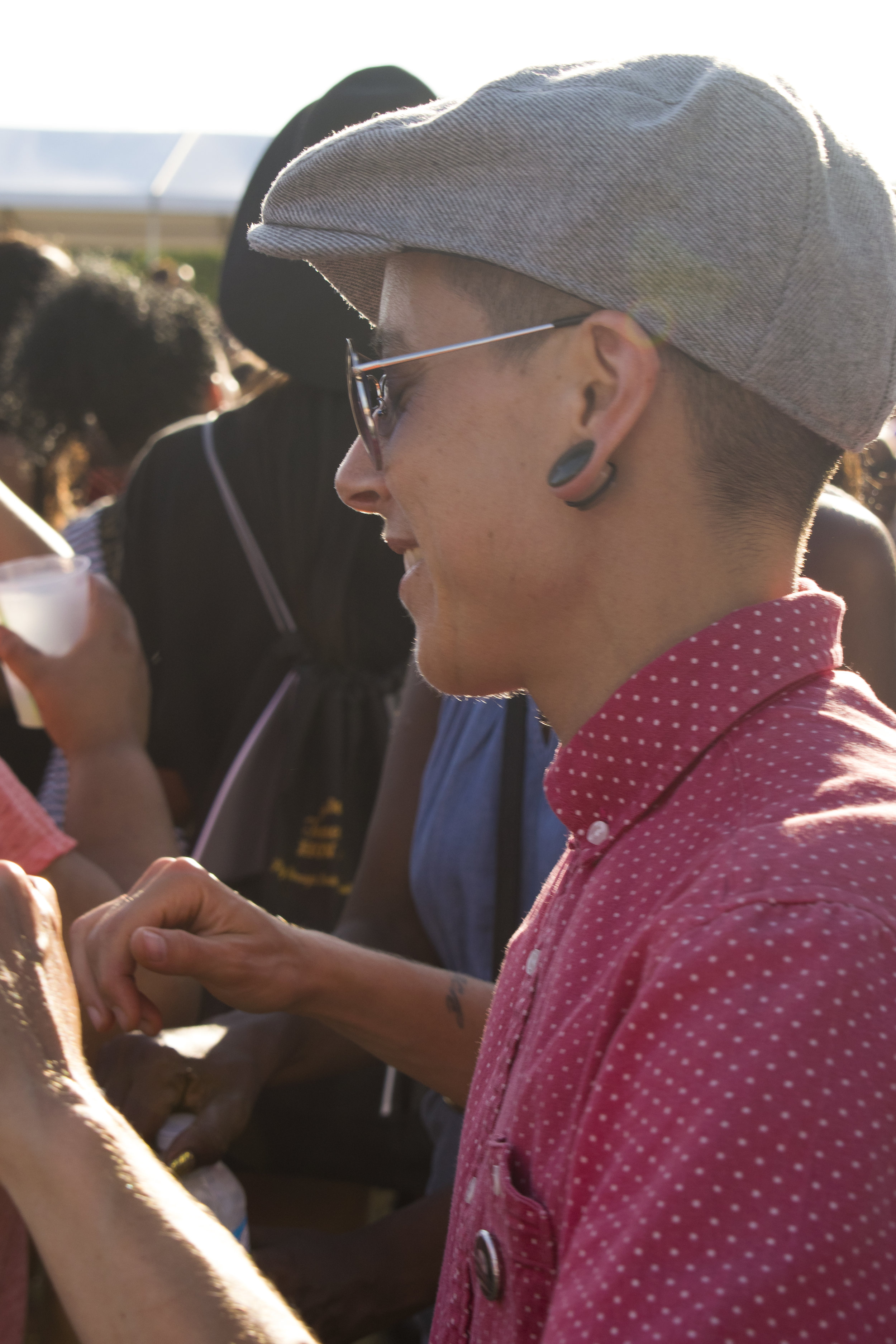
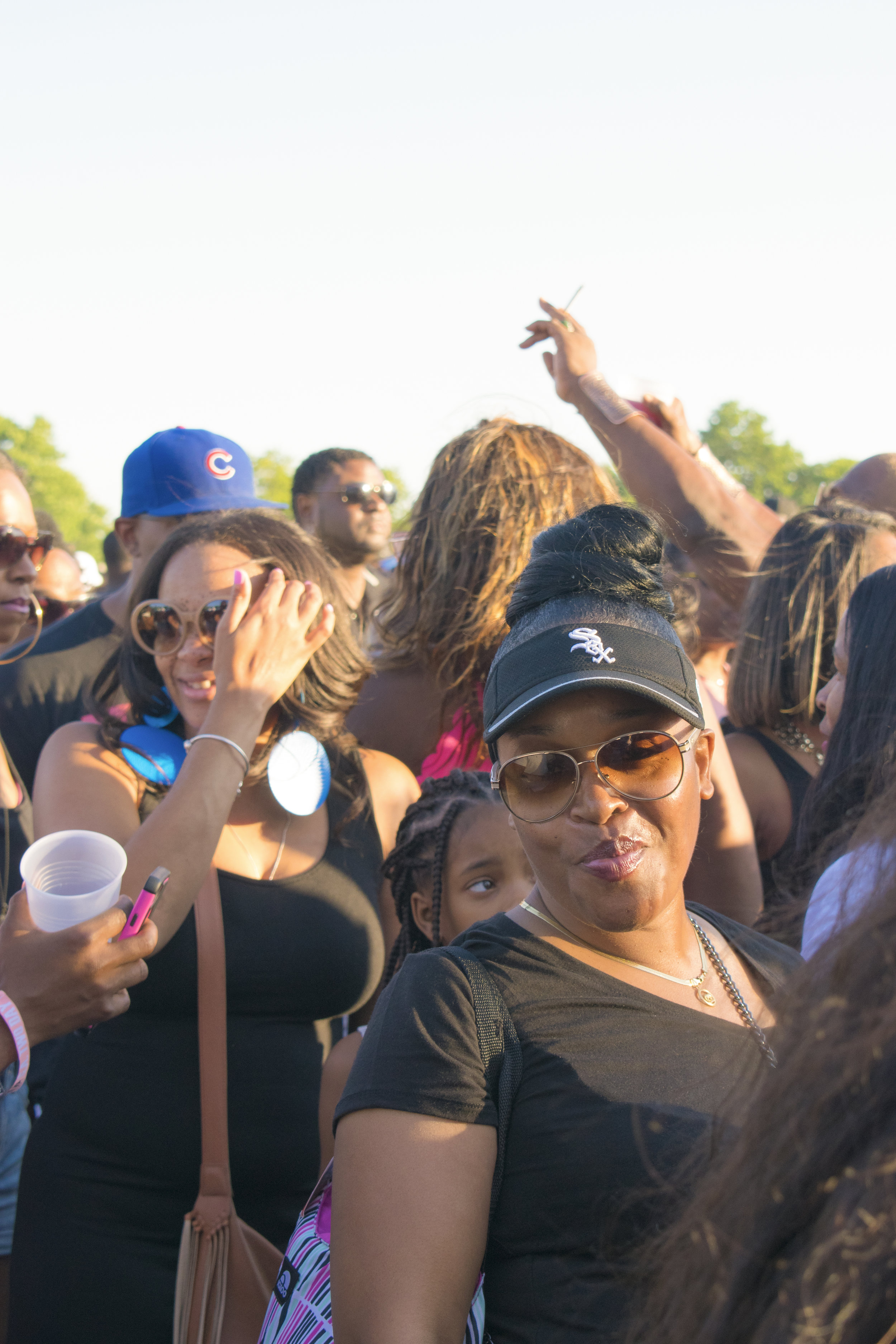
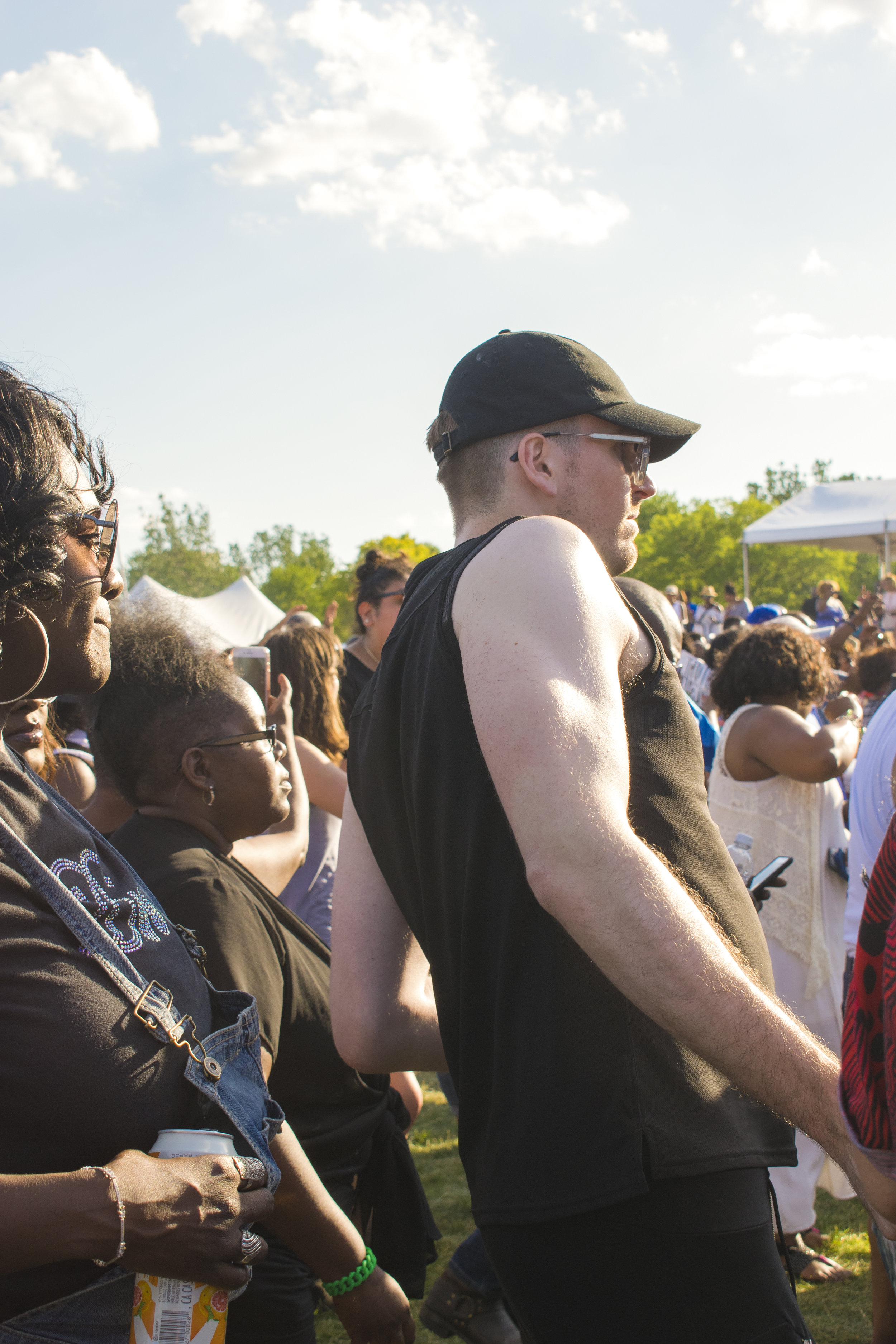





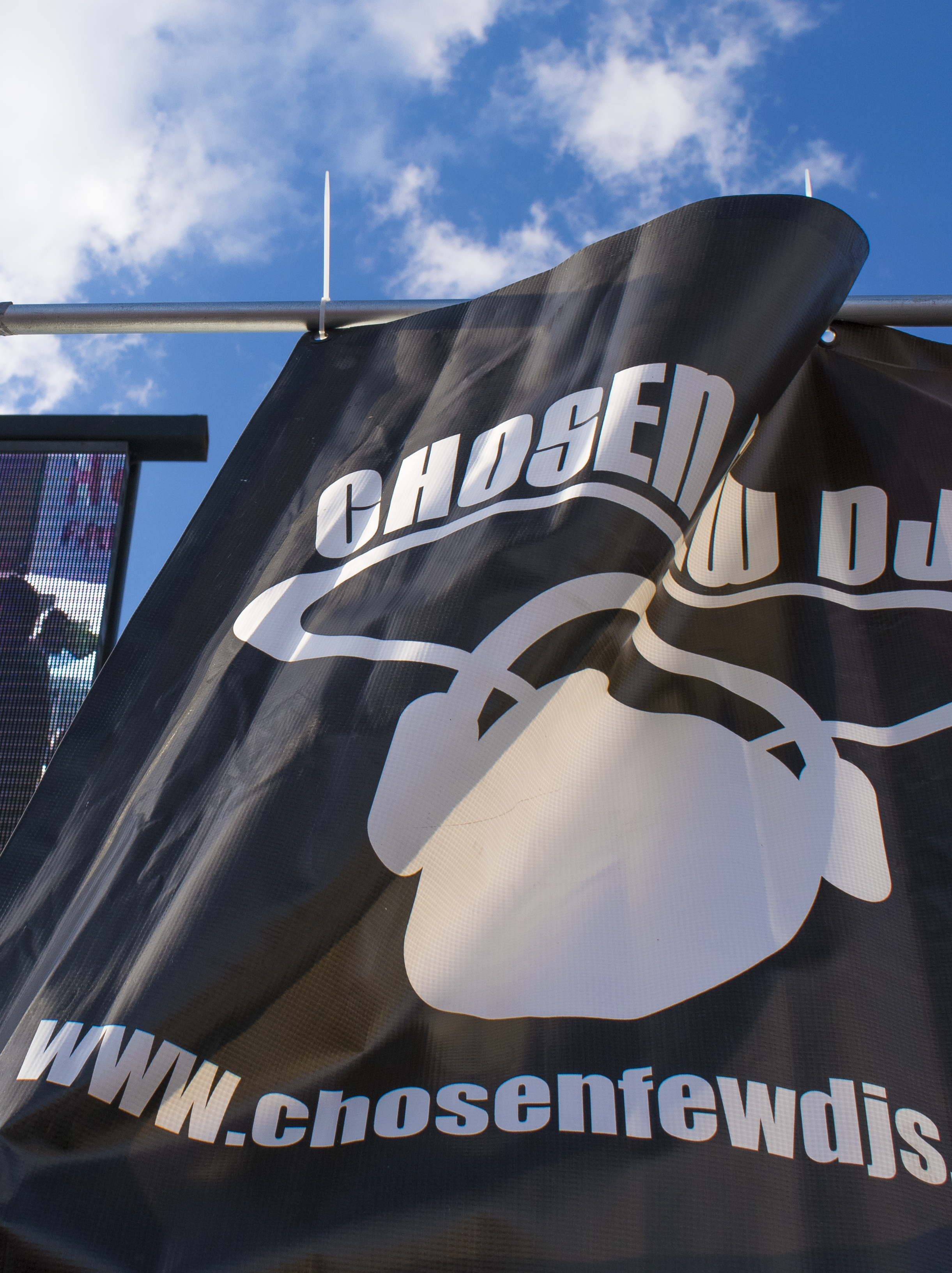














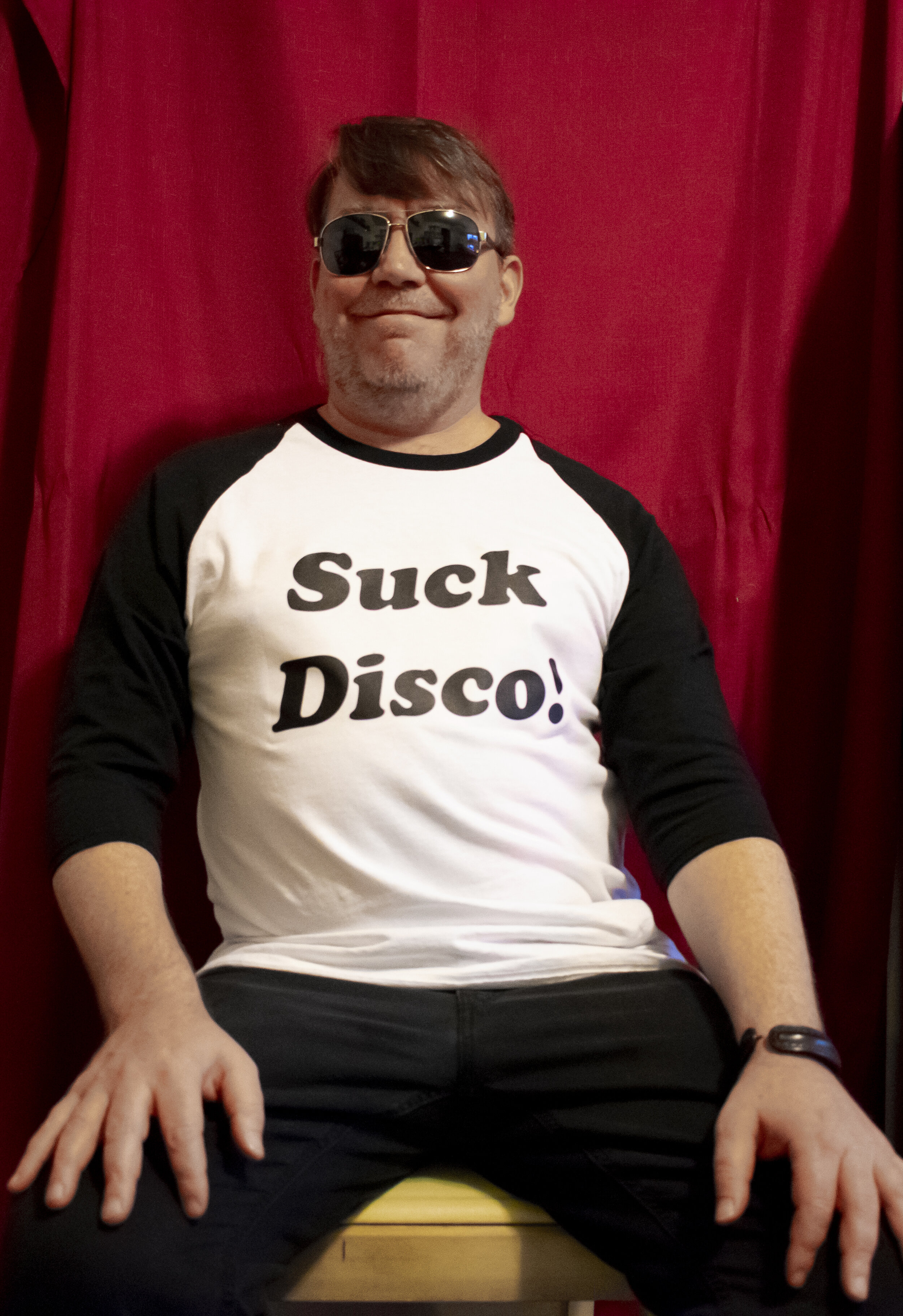


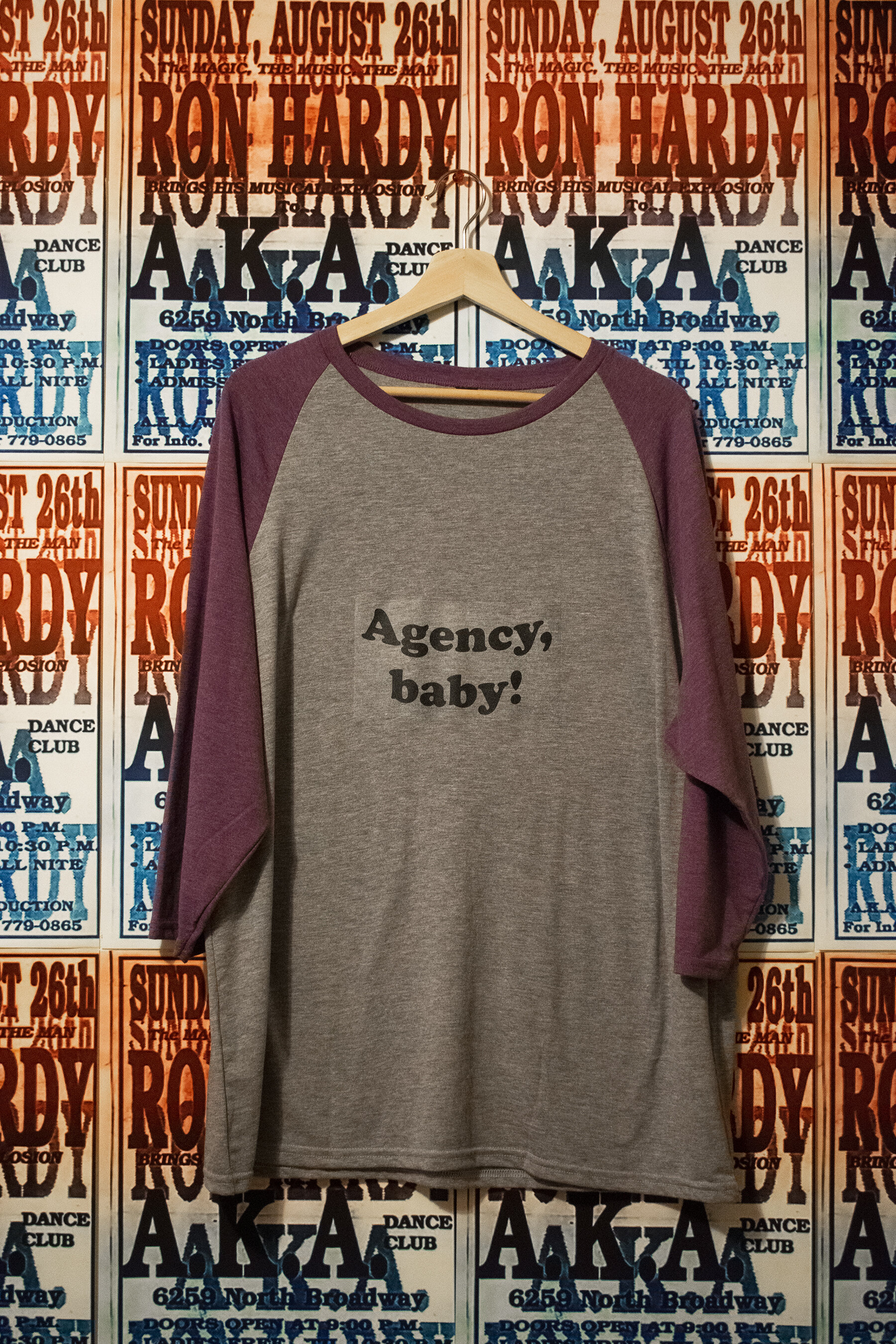



Randy Alexander Gallery, Chicago, Summer 2018
Online Music Library and Research Archive: Kingdom of Doing: Chicago House Music Project
Randy Alexander Gallery is pleased to present Kingdom of Doing: Chicago House Music Project a collaborative exhibition conceived by Thomas Hellstrom engaging the history and legacy of House Music, the international phenomenon originating in Chicago in the 1980s. The exhibition will open with a reception Friday, June 22nd 2018 and will continue through July 28th 2018. Gallery hours are Thursday - Saturday, Noon - 5PM.
Kingdom of Doing: Chicago House Music Project, Hellstrom's first project with Randy Alexander Gallery, metaphorically re-imagines the exhibition and gallery space as a dance floor where spontaneous gestures, collaborations, and movements among strangers are welcomed. Originating in legendary Chicago nightclubs such as The Warehouse, The Music Box, The Loft, The Power Plant and The Playground, House Music fostered a euphoric atmosphere embracing social diversity and self expression through movement - acts of ‘doing’ - beyond discursive thought:
Often people ask me just the plain, blunt question: ‘What is House?’ Musically, House Music is the four on the floor — a relentless beat that keeps the mood flowing, whether fast-paced, vocal, grooving or synthetic, it provides a unique feeling of repetition that gets into your mind, body and soul. Non-musically, House music is a feeling. It’s a euphoric feeling…. It keeps you going; it is a high that you don’t come down from until the music stops. It takes you places and to new heights away from your everyday mundane life. Anything is possible when you’re engulfed in the feeling. - Jesse Saunders, Chosen Few DJs
Anchored by Hellstrom's photo installation works, the exhibition will engage House Music's history in Chicago, its international legacy as well as its communal atmosphere. Hellstrom is inviting visitors to the gallery to produce an artwork on a 3 x 20 foot silver panel during the course of the exhibition.
With respect to House Music’s international community, 'House Nation', the exhibition interprets the gallery space as form of social architecture or 'kingdom' to ask what are the physical limitations of its liberating atmosphere? Concurrent with the exhibition the founding fathers of Chicago House Music will host the Chosen Few DJs Festival Weekend July 7, 2018. Founded in 1990 the annual event now attracts 50,000 revelers and is among the premier House Music Festivals in the world. The future site of the Obama Presidential Center is slated for Jackson Park, steps from the festival grounds. President Obama is a friend and supporter of Chosen Few DJ's extending an invitation to the White House in 2016. From the Chosen Few DJ's official website:
House Music is a Chicago original — a genre of dance music now known the world over that was born, nurtured and developed in Chicago by young DJs, artists, producers, party promoters and club owners whose collective contributions forged a new sound from elements of disco, Euro dance music, rock and of course, drum machines. Beginning in the late 1970s and into the early 1980s, a group of popular teen DJs from Chicago’s south side — Wayne Williams, Jesse Saunders, Alan King, Tony Hatchett and Andre Hatchett — played their unique brand of soulful dance music to huge crowds in packed basements, high school cafeterias and legendary nightspots, including Sauer’s, the Tree of Life, First Impressions, the Playground and the Loft, a club of historic importance in the birth and development of house music. Wayne Williams formalized a DJ collective, originally named “Chosen Few Disco Corp.” in 1977 to meet the high demand for the sound, eventually adding Saunders, King and the Hatchett brothers. In 2006, the group added its first new member in nearly 30 years, legendary DJ and producer Terry Hunter, and in 2012 welcomed DJ and producer Mike Dunn into the ranks. Along with a handful of other legendary DJs including Frankie Knuckles at the Warehouse, Ron Hardy at the Music Box, Lil’ Louis on the west side of Chicago, and the Hot Mix 5 on WBMX radio, the Chosen Few were the DJs primarily responsible during this period for popularizing the underground dance music that came to be known as House Music.
People who truly understand House Music know that it is much more than just music. House is a movement, a culture, and for many of us, a way of life. So I am very excited about Kingdom of Doing: Chicago House Music Project because it promises to recognize and engage the deeply artistic and multi-faceted nature of House Music and its surrounding culture. – Alan King, Chosen Few DJs
Since relocating from New York City to Chicago Thomas Hellstrom's work has responded to his newfound physical and cultural surroundings through large scale, immersive photo installations. Contemplating local histories and engaging varied communities Hellstrom’s works consider the poetics of place. Hellstrom received his BFA from the University of Minnesota, Minneapolis. After he relocated to New York where he maintained a studio in the Chelsea gallery district for 20 years. His work has been included in exhibitions internationally, notably: Hiromii Yoshi Gallery, Tokyo and Zach Feuer Gallery, NY garnering the attention of The New York Times, reFRESH (UK) and Camera Austria. Kingdom of Doing: Chicago House Music Project is Hellstrom's first solo exhibition in Chicago.
Originally opened in New York in 1991, Randy Alexander Gallery is a contemporary art gallery focused on work by emerging and established artists. In New York the gallery presented early solo exhibitions by Rirkrit Tiravanija, Fred Tomaselli and Dan Peterman. The Chicago gallery continues a similar program of presenting work by emerging and established conceptually based artists. The gallery is located at 1926 South Wabash Avenue at Cullerton Street. For further information please contact Randy Alexander Gallery: 347.223.1528 / info@randyalexandergallery.com.

Still Life 1990
2018, condoms and glass bowl, 4 x 8 inches
Kingdom of Doing: Chicago House Music Project, titled after an Earth, Wind and Fire lyric, arose from discussions with Randy Alexander towards engaging the gallery's South Loop community while advancing artistic disciplines in Chicago beyond the visual arts. Randy and I agreed given the current political climate it was appropriate, if not urgent, to celebrate House's inclusive culture with an exhibition that fostered visitor agency and interaction. Since 1990 Chicago's South Side hosts The Chosen Few DJs Festival Weekend, a House Music festival that attracts 50,000 revelers. Organized by the Chosen Few DJs, the original musicians that pioneered House Music in Chicago in the 1980s, the festival is held in Jackson Park near the future site of the Obama Center.

After a 25 year absence living and working in New York City, I relocated to my hometown of Milwaukee to care for my parents. Responding to new surroundings my work changed dramatically focusing on local histories and the physical landscape. Part of my embrace of Chicago, where my ancestors emigrated from Stockholm in the 1890s, is the origin and legacy of House Music, an art form to which I hold a deep 30 year connection.
The research for 'Kingdom of Doing: Chicago House Music Project' (titled after a lyric by 'Earth, Wind and Fire') introduced me to legendary figures in the Chicago House community, specifically the Chosen Few DJs organization, who advised on the project. The visual approach remixes 1980s feminist contemporary art strategies (the allegorical ready-made, appropriation, mise-en-scene sculpture) with relational aesthetics of my own generation facilitating interaction among strangers.
Citing 1990 as a point of origin when I was first introduced to House Music as an art student, the project includes an autobiographical layer. The installation ‘Elevator to the Gallows’ (1990-2018) contemplates coming of age as a gay man at the height of the HIV AIDS crisis in the late 80s-early 90s, also the height of House Music’s international popularity.
- Thomas Hellstrom

2018, 33 archival ink jet prints mounted on silver museum board, 10 x 17.5 feet overall
Found, vintage posters promoting appearances by DJs Frankie Knuckles and Ron Hardy at A.K.A. night club, Chicago, 1990
Kingdom of Doing: Chicago House Music Project employs 1980s feminist contemporary art strategies (appropriation, mise en scene sculpture and the allegorical readymade) to describe a 1980s music movement pioneered by LGBT+ men of African descent. As such the posters are a form of portraiture, homage and a gesture of appropriation, to which house music in its remixing and sampling of existing material is essentially engaged.

2018, archival inkjet prints, multiple print runs to achieve color saturation, 13 x 19 inches each
'Can You Feel It?' an early, important Chicago House track by Larry Heard aka Mr. Fingers was likely played by Ron Hardy at this performance. The found fliers are composed visually to emulate the track’s moody rhythm, while the silver support emulates the interior of Chicago’s legendary night club ‘The Warehouse’ and Chicago's built environment circa 1990., "Kingdom of Doing: Chicago House Music Project" employs 1980s feminist contemporary art strategies (appropriation, mise en scene sculpture, and the allegorical readymade) to describe a 1980s musical movement pioneered by LGBT+ men of African descent. As such the posters are a form of portraiture, homage and a gesture of appropriation, to which house music in its sampling and remixing of existing material is essentially engaged.

Kindom-of-Doing.tumblr.com
2018, online, on-demand music library and research archive, digital projection, dimensions variable
Gallery visitors were invited to peruse my research archive to view photographs and historical ephemera and listen to classic dj sets and interviews on demand: kingdom-of-doing.tumblr.com
Jack (in the beginning)
2018, fog machine on pedestal, fog, dimensions variable
Titled after Chuck Roberts’ celebrated 1987 track and Chicago House Music creation myth 'Jack's House' the allegorical readymade sculpture made literal the vague, disputed history of House Music. The fog, like music, filled the gallery volumetrically softening the distance between strangers.

Kingdom of Doing: Chicago House Music Project metaphorically re-imagines the exhibition and gallery space as a dance floor where spontaneous gestures, collaborations, and movements among strangers are welcomed. Originating in legendary Chicago nightclubs such as The Warehouse, The Music Box, The Loft, The Power Plant and The Playground, House Music fostered a euphoric atmosphere embracing social diversity and self expression through movement - acts of ‘doing’ - beyond discursive thought: "Often people ask me just the blunt question: ‘What is House?’ Musically, House Music is the four on the floor — a relentless beat that keeps the mood flowing, whether fast-paced, vocal, grooving or synthetic, it provides a unique feeling of repetition that gets into your mind, body and soul. Non-musically, House music is a feeling. It’s a euphoric feeling…. It keeps you going; it is a high that you don’t come down from until the music stops" -Jesse Saunders, Chosen Few DJs

Installation view: West Gallery, emulating the interior of The Hacienda nightclub Manchester, UK.
2018, 12 archival inkjet prints, silver museum board, 5 x 10.5 feet
Undated, found poster for 'Nude Night' a weekly house music party at The Hacienda nightclub Manchester, UK. Likely from 1986, the poster advertises the first personal appearances by Chicago House DJs in the UK introducing Chicago House Music to Great Britain. By 1988 Acid House became a cultural phenomena in the UK some have described: “as big as punk”.

2018, 12 archival inkjet prints mounted on silver museum board, 13x19 inches each

Installation view: West Gallery, emulating the interior of The Hacienda night club, Manchester, UK
A Guy Called Gerald
2018, Fog machine on pedestal, fog, dimensions variable
Allegorical readymade sculpture tilted after the composer of 'Voodoo Ray' the classic, early British Acid House track.
From Wikipedia: In an interview with Mojo in 2005, Gerald explained that "Voodoo Ray" was recorded over 2 days in June 1988 at Moonraker Studios in Manchester. Rham! initially pressed up 500 copies of the record and it sold out in a day.[7]
"I was trying to keep it quiet from the dudes in 808 State," Simpson recalled, "because I was still working with them but wanted to do my own thing. It was fun just slipping out of their basement and taking the drum machine. They'd be like, 'Where are you going?' I'd say, 'Oh, I'm just going home to do some programming,' then nip off to another studio. I was trying to get a tribal sound and found this sample saying 'Voodoo rage'. That was originally the title but the old sampler I was using didn't have that much memory. I just about had enough for 'voodoo ra…', so that's what it became."
1991
2018, 5 archival inkjet prints, silver museum board 30 inches x 10.5 feet
Found club fliers from the Hacienda night club Manchester, UK recognized for introducing Chicago House Music to a global audience. The columnar form and color scheme of the installation emulates the renowned interior design of the Hacienda circa 1991.

Installation view: West Gallery, emulating the interior of The Hacienda nightclub Manchester, UK.
1991
2018, 5 archival inkjet prints, silver museum board, 32 inches x 10.5 feet
Legendary
2018, 5 archival inkjet prints, silver museum board, 32 inches x 10.5 feet

2018, Archival inkjet print, 13 x 19 inches
Found poster, The Hacienda nightclub, Manchester UK featuring a quote by Anthony Wilson, founder of Factory Records, owner of The Hacienda and the impresario who championed Chicago House Music in the UK.

2018, Archival inkjet print, 13x19 inches
NME magazine, UK, November 1988.
By 1988 Acid House Culture had exploded in the UK as did secret, illegal dance parties in the London countryside (the precursor of what we now call ‘Raves’). Inevitably the British Government cracked down on Acid House, banning records and jailing party-goers. In hindsight Acid House Culture is now acknowledged as a political sea change in the UK, effectively ending the Thatcher era.

Installation view: Project Space
Elevator to the Gallows
1990-2018, ink, graphite and collage on paper, cotton gloves, dimensions variable
Introducing an autobiographical element the collage was made in 1990 at the height of the HIV/AIDS crisis, when as an art student I was first introduced to House Music. The title arose spontaneously while Randy Alexander and I were installing and discussing Miles Davis’ improvised score to Louis Malle’s 1958 film of the same name. The title aptly describes the hopelessness of the HIV/AIDS crisis in 1990 that affected Randy and I profoundly.

1990, ink, graphite and collage on paper, 9 x 12 inches
Produced while I was an art student the collage is Influenced by the work of Felix Gonzalez-Torres and Robert Gober considering the absented figure and the fragility of time itself at the height of the HIV/AIDS crisis.

Steve Dahl is the Chicago radio personality who launched the ‘Disco Sucks’ t-shirt campaign and organized ‘Disco Demolition Night’ on July 12th, 1979. Hundreds of Disco records were publicly destroyed during a White Sox baseball game resulting in the crowd storming the playing field and instigating a riot. In the racially divided Chicago of the 1970s, it’s not very difficult to ascertain the implied racism of this event. Nile Rogers, a founding member of the band Chic of ‘Le Freak’ fame likened the event to a Nazi book burning (the public destruction of culture) and pointed out the not so subtle sexual innuendo of the phrase ‘Disco Sucks’ as homophobic and misogynistic. Forty years later the same toxic masculinity can be readily observed at Trump rallies and in daily barrages of abusive Twitter communication. Toxic masculinity of bully culture now descends from the Oval Office, accompanied by an alarming increase in hate-based attacks and crimes. Adolescent boys are particularly susceptible. The following series contemplates my own experience of the ‘Disco Sucks’ moment as an adolescent boy in Milwaukee and lethal bullying attacks in 2019. Furthermore, I look at both eras through a 2020 lens, as an out gay man of 50. A series of t-shirts I made in response intends to playfully and forcefully flip the script of the ‘Disco Sucks’ t-shirt campaign, extending agency, and empathy to those harmed and othered by Disco Demolition Night and the current US Administration.

1981-2020
This and following four images: Archival Inkjet prints, 13x19”
Among my earliest experiences of feeling shame about my perceived sexual orientation was while waiting in line for my favorite roller coaster, The Tidal Wave. A group of teenagers was wearing ‘Disco Sucks’ t-shirts and I instinctively knew I was the target. I took this photo when I was 12 with my Dad’s Kodak camera. Returning to it at 50 is an attempt to console the horrible panic and overwhelming emptiness of that memory, to be disappeared in plain sight.

2019, Fabric transfer on t-shirt
2018, Archival ink-jet prints, 13 x 19 inches each

Titled after the classic disco track by Evelyn Champagne King, the work both condemns Disco Demolition Night and contemplates the shaming and othering at its very core.
2019, Fabric transfer on t-shirt

2019, Fabric transfer on t-shirt
2018, Archival ink-jet prints, 13 x 19 inches each

2019, Fabric transfer on t-shirt
2018, Archival ink-jet prints, 13 x 19 inches each

Quoting Sister Sledge’s 1979 classic ‘Greatest Dancer’ the lyrics describe a stylish, attractive man in a San Francisco discotheque. Interest in fashion, appearance, and physique have been traditionally demeaned by toxic masculinity’s denigration of the feminine. Nile Rodgers is a credited as a co-songwriter on this track with Bernard Edwards.
2019, Fabric transfer on t-shirt

2019, Fabric transfer on t-shirt
2018, Archival ink-jet prints, 13 x 19 inches each